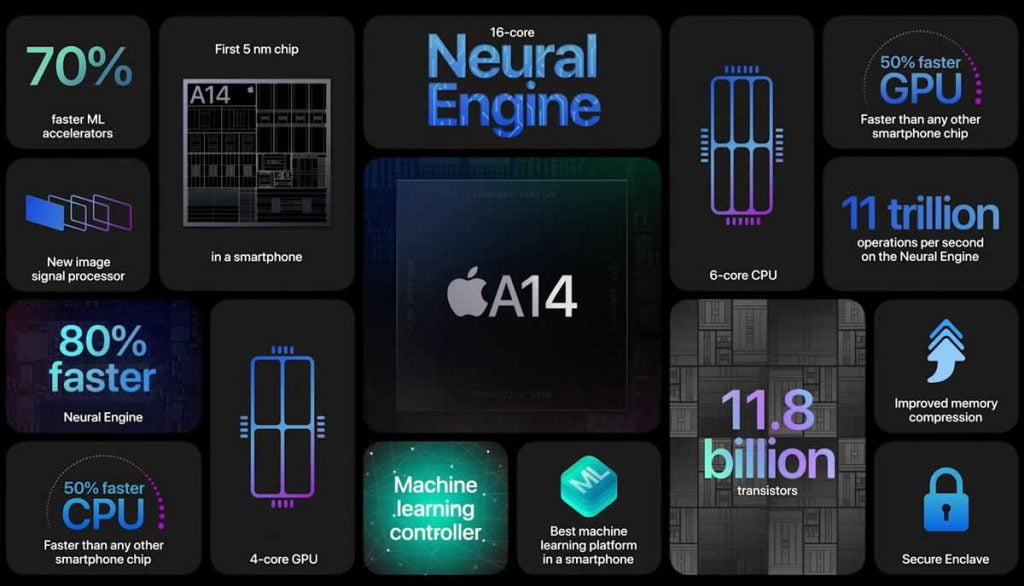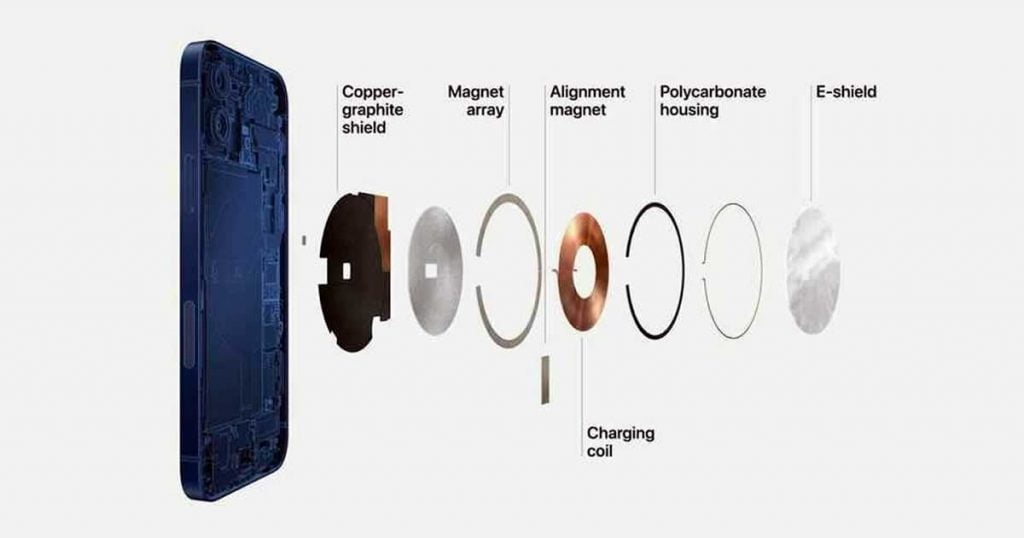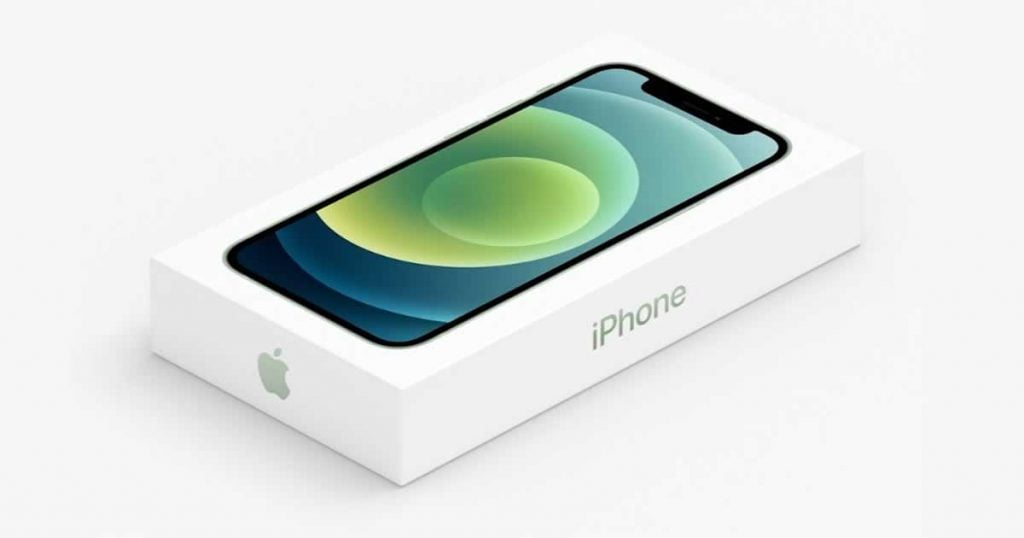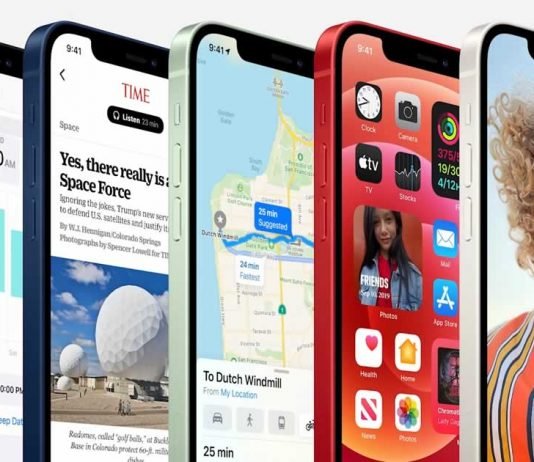Finally, the day has come — Apple presented the iPhone 12 in four versions: iPhone 12 mini, iPhone 12, iPhone 12 Pro, and iPhone 12 Pro Max. Common features are a new design, OLED displays, the A14 Bionic as the new processor, and 5G support. Apple has also improved the dual and triple cameras, including Dolby Vision.
The iPhone 12 mini is the new smallest model with 5.4 inches, followed by the iPhone 12 with the 6.1 inches of the previous iPhone 11. With 64.2 × 131.5 × 7.4 mm and 135 grams, the iPhone 12 mini is smaller and lighter than the current iPhone SE. According to Apple, it is currently the smallest 5G smartphone in the world.
The iPhone 12 Pro is the same size at 6.1 inches and thus 0.3 inches more than the iPhone 11 Pro with its 5.8 inches. The top model is the iPhone 12 Pro Max, which grows from 6.5 inches to 6.7 inches.
All new iPhone 12 models are visually similar. Compared to last year’s devices, they have a more angular housing and are thus reminiscent of the classic design of the iPhone 4 and 5.
For the first time, Apple is using an AMOLED display for all new iPhones, with which colors are crisp, and blacks are deep black. The manufacturer also installed an IPS panel in the iPhone 12.
The displays of the new devices with a so-called ceramic shield should be particularly robust. The new protective layer was developed in collaboration with the glass specialists from Corning and is four times as shatterproof as its predecessor’s glass.
Differences between Pro and Non-Pro are not only to be found in the display but also in the housing. Apple has given the Pro versions a frame made of stainless steel. The cheaper versions come with an aluminum frame.
The memory configurations of the iPhone 12 (mini) range from 64 GB to 128 GB and up to 256 GB. The iPhone 12 Pro (Max) starts at twice the 128 GB, then goes to 256 GB and ends at 512 GB.
Contents
Powerful A14 Bionic

The A14 Bionic, the latest chip from the Apple silicon family, which is also found in the new iPad Air, is used. The A14 Bionic is Apple’s and also the industry’s first 5 nm chip for the mass market and is manufactured at TSMC using the N5 process. 11.8 billion transistors form a new Hexacore CPU, which consists of two new Firestorm and four Icestorm cores.
A new custom design with four cores is used for the GPU. As in the iPad Air, the chip is connected to LPDDR5 instead of LPDRR4X for the first time. The architecture of the A14 Bionic also includes new machine learning accelerators and a new neural engine with 16 cores for the faster provision of artificial intelligence. The AI performance increases with the new chip from 5 TOPS of the A13 Bionic to 11 TOPS.
The first iPhones with 5G support
After Intel’s exit from the consumer segment for 5G modems and an agreement with Qualcomm for the next few years, Apple is again relying entirely on basebands from San Diego. Whether the iPhone 12 family relies on the Snapdragon X55 or already the new Snapdragon X60 modem, Apple’s announcement was not clear. However, in both cases, the modem covers all current cellular standards 2G, 3G, 4G, and the new 5G in a single chip. The frame of the iPhones acts as an antenna and, like the iPhone 4, is divided by several lines.
New dual and triple cameras
Apple has revised the cameras considerably, with a division into dual cameras for the iPhone 12 and triple cameras for the iPhone 12 Pro. But there is also a difference within the Pro series this time, as only the iPhone 12 Pro Max has a 47 percent larger sensor for the main camera and a telephoto lens with a higher optical magnification of a factor of 2.5.
iPhone 12 mini and iPhone 12 come with dual cameras with wide-angle and ultra-wide-angle lenses. The aperture of the main camera is now f/1.6 instead of f/1.8. For the ultra-wide-angle lens, Apple specifies an aperture of f / 2.4. In terms of camera, the iPhone 12 has the same technical characteristics as the smaller iPhone 12 mini. There are only bigger differences with the iPhone 12 Pro, which offers a telephoto lens with a focal length of 52 mm again after 35 mm equivalent for double optical magnification compared to the main camera with 26 mm. Including the ultra-wide-angle lens with 13 mm, Apple advertises with an optical zoom of up to 4x.
Smart HDR of the 3rd generation is supposed to increase the quality of recordings in difficult lighting conditions again across the board compared to the iPhone 11. With the new iPhone generation, Apple has also revised the night mode, which is now available for all lenses and the front camera. Night mode is also used in video recordings and can be used for the first time for time-lapse.
New MagSafe

Apple has brought back the MagSafe brand, a new range of magnetic products to improve wireless charging.
The iPhone 12 now includes magnets inside, which allow you to align the iPhone with chargers while maintaining compatibility with non-MagSafe models. But with those that do, we just have to bring them closer, and they will automatically stick.
Apple has also introduced new cases with MagSafe compatible magnets, in addition to a wallet that we can attach to the iPhone. Apple has briefly shown a wireless charger that allows us to recharge the iPhone and Apple Watch at the same time, and is collaborating with manufacturers like Belkin to launch new models. The iPhone 12 promises about 17 hours of battery life in video playback.
As part of its green bet, Apple has decided to no longer include the charger with the new iPhone 12, in addition to the wired headphones. Apple justifies it in that users already have many chargers and are making the leap to wireless headphones (like Apple’s own AirPods). In return, the iPhone 12 now comes with a USB-C to Lightning cable, compatible with fast charging if we already have a fast charger.

Market launch and prices of iPhone 12:
The cost will start at $799 and $699 for the mini version. The price of the iPhone Pro will instead be $999, while the price for the Pro Max version will be $1,099.
Apple will be accepting pre-orders for the iPhone 12 and iPhone 12 Pro as early as October 16 and will go on regular sale a week later. iPhone 12 mini and iPhone 12 Pro Max will be released later and can be pre-ordered from November 6 and purchased a week later on November 13.


